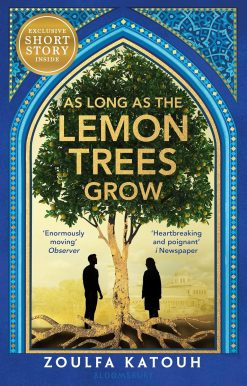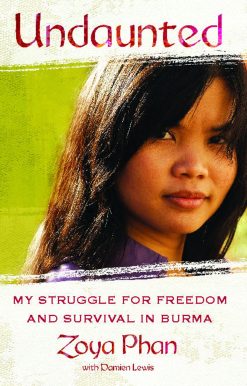Child of Light: A Biography of Robert Stone
26.00 JOD
Please allow 2 – 5 weeks for delivery of this item
Description
The first and definitive biography of one of the great American novelists of the postwar era, the author of Dog Soldiers and A Flag for Sunrise, and a penetrating critic of American power, innocence, and corruptionRobert Stone (1937-2015), probably the only postwar American writer to draw favorable comparisons to Ernest Hemingway, Graham Greene, and Joseph Conrad, lived a life rich in adventure, achievement, and inner turmoil. He grew up rough on the streets of New York, the son of a mentally troubled single mother. After his Navy service in the fifties, which brought him to such locales as pre-Castro Havana, the Suez Crisis, and Antarctica, he studied writing at Stanford, where he met Ken Kesey and became a core member of the gang of Merry Pranksters. The publication of his superb New Orleans novel, Hall of Mirrors (1967), initiated a succession of dark-humored novels that investigated the American experience in Vietnam (Dog Soldiers, 1974, which won the National Book Award), Central America (A Flag for Sunrise, 1981), and Jerusalem on the eve of the millennium (Damascus Gate, 1998).An acclaimed novelist himself, Madison Smartt Bell was a close friend and longtime admirer of Robert Stone. His authorized and deeply researched biography is both intimate and objective, a rich and unsparing portrait of a complicated, charismatic, and haunted man and a sympathetic reading of his work that will help to secure Stone’s place in the pantheon of major American writers.
Additional information
| Weight | 0.9 kg |
|---|---|
| Dimensions | 3.9 × 16.3 × 24.4 cm |
| PubliCanadation City/Country | USA |
| by | |
| Format | Hardback |
| Language | |
| Pages | 608 |
| Publisher | |
| Year Published | 2020-3-17 |
| Imprint | |
| ISBN 10 | 0385541600 |
| About The Author | MADISON SMARTT BELL is the author of numerous novels, including All Souls Rising (1995), nominated for a National Book Award and the Pen/Faulkner Prize, and Freedom's Gate (2007), a biography of the Haitian revolutionary Toussaint L'Ouverture. He teaches writing at Goucher College in Towson, Maryland, and is married to the poet Elizabeth Spires. |
“Revealing . . . A sensitive and thorough biography." —Dwight Garner, The New York Times“Child of Light leaves the reader with the urge to return to all of Robert Stone’s work—surely the best sign of a fine biography." —Mike Mewshaw, The Washington Post"Madison Smartt Bell’s new biography of the American novelist Robert Stone checks every box you can throw at it. Child of Light is an absolute joy for Stone acolytes like myself, and it will hopefully serve as a reason for the uninitiated to discover the most under-discussed major American novelist of the last century." —Patrick McGinty, Pittsburgh Post-Gazette“The late Robert Stone always signed his missives, ‘A blessing,’ and that is what this book by the great Madison Smartt Bell is—a much-needed and lovingly assembled account of the life of Robert Stone, who remains a gifted visionary and a hero to so many, myself included.” —Rachel Kushner, author of The Mars Room“This searching, intimate, deeply fascinating biography of Robert Stone is a boon for Stone fans that will surely lure new readers to his work. Madison Smartt Bell brings his tremendous storytelling gifts to Stone’s wild, colorful life and work, and the result is irresistible.” —Jennifer Egan, author of Manhattan Beach"Comprehensive, detailed, and thoroughly researched. . .A must read for Stone fans." —Baltimore Magazine"Bell meticulously recounts the life of Robert Stone . . . A solid biography of an important American novelist." —Publishers Weekly"Masterful." —BBC“Robert Stone is one of America’s literary giants of the second half of the twentieth century, and his life as much as his work is iconic. In Madison Smartt Bell he has the best biographer any writer of his stature could hope for, a distinguished fellow novelist, a brilliant historian and researcher, and as it happens, a longtime friend.” —Russell Banks, author of Continental Drift“Robert Stone will doubtlessly go down as one of the major voices in twentieth century American literature. In this engaging biography, Madison Smart Bell, a splendid novelist himself, turns his talent and intelligence to Stone’s evolution as a writer, from his unusual childhood to his triumphs as an author favorably compared to Graham Greene and Joseph Conrad. Bell’s essays on Stone’s work, interspersed with accounts of his personal and professional life, do more than justice to their subject, cementing Stone’s place in the canon of great American writers.” —Philip Caputo, author of A Rumor of War Child of Light is as much a page-turner as the best suspense novel, and that’s entirely as it should be. Robert Stone lived a rambunctious, colorful, questing life that landed him with uncanny regularity in the midst of the major happenings of his time, from the rise of the counterculture in the early 1960s to Vietnam, Central America, the Middle East, and beyond. Madison Smartt Bell’s excellent biography captures the essence of this iconoclastic genius, and deftly illuminates Stone’s writing against the backdrop of his intense emotional life and intellectual drive. Robert Stone was one of the most brilliant writers America has produced, and with Child of Light we have a biography that’s every bit the equal of its subject.” —Ben Fountain, author of Billy Lynn’s Long Halftime Walk "For anyone who appreciates great literature (especially the wonderful fiction of Stone), this is required reading." —Library Journal |
|
| Excerpt From Book | Chapter 1A New York ChildhoodI was born in Brooklyn on President Street, the border of Park Slope and South Brooklyn,” Robert Stone recalled in midlife, for a book of essays on Catholicism. The day of his birth was August 21, 1937. “My mother was a schoolteacher in the New York public school system. My father worked for the old New Haven Railroad. My mother’s family had been on the Brooklyn waterfront, working on the tugboats, for several generations. When I was still small, my parents separated. I moved with my mother to Manhattan and grew up then in Yorkville and on the Upper West Side. My mother was schizophrenic, and when I was about five she was hospitalized for a while. I went to St. Ann’s at Lexington and Seventy-Seventh Street, which later became Archbishop Molloy High School. St. Ann’s was somewhere between a boarding school and an orphanage, run by the Marist Brothers. I was at St. Ann’s until I was nine and then I was out again.”This account exaggerates the stability of Stone’s early years somewhat. Supposed to have been a railroad detective, the C. Homer Stone who appears on Robert Stone’s birth certificate is a cipher. Sometimes Bob Stone spoke of him as if he had occasionally appeared on the scene of his early childhood . . . and sometimes not. His mother, Gladys Grant, apparently never married anyone and raised her only child as a single parent.In the late 1970s, Stone agreed to be interviewed, at length and in deep detail, by Ann Greif, who was researching a dissertation in psychology. Greif, who took a psychoanalytic tack in her questions and commentary, was particularly interested in Stone’s early childhood and his relationship with his mother. Some visceral recollections were prompted.“My mother didn’t have an honest bone in her body, God bless her. She really was, if she had been a little more together she would have been in the game, she was a real outsider. . . . She really didn’t give a shit about anybody except me and her. But she did care about me. . . . She didn’t relate to other people, she really didn’t care about other people. . . . I mean she did not care about the government and she didn’t care about the war, whether Hitler won the war or Roosevelt won the war was all the same to her, whether the government carried on and saved the world or whether the world didn’t get saved, whether the Russians took over, she really couldn’t care less. I mean she was looking out for herself and to give her credit she was looking out for me.”Jim Maraniss, a close friend of Bob’s since the 1970s, recalled that Bob sometimes seemed to believe that his father had been a foreigner, perhaps a Jew, not quite a peddler but someone who ran a stand or storefront in one of the East Side neighborhoods where Bob lived with his mother. “I am very unclear about this, because my mother was not very confiding in me . . . she was sometimes delusionary and she was sometimes making up stories so it is very difficult to be very clear.”In A Flag for Sunrise, Stone created a cameo role for “Sy; he had once run a newspaper stand on the corner of Dyckman Street and Broadway. Sy lived almost across the hall from Holliwell and his mother in a cheap hotel in Washington Heights for ten years and Holliwell still half suspected that Sy had been his mother’s lover.” The boy Holliwell sometimes helps Sy in the newsstand; Sy teaches him to sing “The Internationale” and mocks his Catholic education.In the early 1960s, when her son was grown, Gladys told him various stories of his origin. Sometimes Bob encouraged her with drink. Once she told him that his father had been a Greek, a Jew, or a Lebanese, and on another occasion she claimed that his father had been quite another person who was killed in the 1937 bombing of Shanghai. Again using alcohol as an interrogative tool, Bob got her to admit this story was untrue, and yet she had saved bar receipts which proved that she really had been in Shanghai in the 1930s. “For years,” Bob wrote later, “I had been coming across identity documents, apparently referring to her, but representing the bearer under a variety of names. Passports, visas, bar bills in Tokyo, even the deeds to two cemetery plots in two different cemeteries. The documents were signed in her handwriting but affirming two different names.”Another time Bob was told “that my father was a guy she met somewhere around the New York Public Library and I presume made it with, I have to presume made it with, but I don’t think she ever saw him again. No, she told me he did come around once in a while, but she didn’t want anything to do with him. I really don’t know who he was. The odd thing also is that I don’t think my mother was very sexually active. In my lifetime she was not at all ever. She had no boyfriends, no men friends of any kind, all the time I was growing up, never. It would not surprise me too much if I found out that was her first sexual experience and that it took place at the age of forty or what not.”Stones own accounts of his paternity were inconsistent. Eventually he settled on the idea that he had never met his father at all, except for one occasion when a man came to the door—but his mother didn’t let whoever it was in. The uncertainty was such that Gladys might just as well have been fertilized by a shower of light—as Zeus impregnated Danaë. Bob once found something his mother had written about his birth in the heart of a bright moonlit night. The account had a numinous quality, but that was as much as he ever knew about it. Despite all the difficulties of his childhood he always had the sense that his mother was completely devoted to him, and only to him.•Gladys’s father was a tugboat captain; a Scots American Protestant, while her mother was a Shanley—a lace-curtain Irish family hailing from the Finger Lakes region of upstate New York. There was some cross-religious tension in this Catholic-Protestant marriage (the surviving children leaned to the Catholic side). Captain Grant plied his trade in New York Harbor. For a while the Grant family had settled in Manhattan’s East Sixties, probably moving there around the time that the rail line that ran up Park Avenue through Harlem was put underground in the 1870s. Not all of their many children survived. In this period, diseases like scarlet fever and diphtheria took many young lives, including those of Gladys’s twin brothers and a third and favorite brother, John.Gladys Grant was born on October 16, 1894. She told Bob “about going out in her father’s tug boat early in the morning in the harbor during the time they were building the Brooklyn Bridge” (a detail which must have been one of her fantasies, since the Brooklyn Bridge was completed in 1883). Gladys remembered “going to bring him cans of beer from the saloons” around the harbor, and “going with pails to a ketchup factory.” She described for Bob the reconstruction of Park Avenue into “a desirable neighborhood” after the rail line went underground, although she could not have been an eyewitness to that since it happened almost twenty years before she was born. As an adult Stone speculated that Captain Grant’s position in the harbor must have given the family some prestige, but in Gladys’s recollection they were not always prosperous: “. . . she would go on sometimes about how poor they were, some of the time, tales of poverty and so on. It really obsessed her a lot. She was always struggling with money, and she had a great fear of poverty. It seemed to be something she had grown up with.”A schoolteacher in her prime, she probably attended Hunter College. Somewhere along her way she picked up a rather patrician New York accent, which her son absorbed from her in the course of his hardscrabble childhood. She had traveled widely for a woman of her class and generation. She was acquainted with people in Canada and took Bob there when he was small, as well as taking him sometimes to Block Island. Her connection there remains a mystery, but those visits were regular, and when Bob got older he was able to get summer jobs on Block Island, working in and around the vast, barnlike tourist hotels.Gladys’s claim to have studied at the Sorbonne may or not have been true, but she had certainly been in France. Her story of having been in Shanghai and Japan in the 1930s seemed even less credible, yet Bob confirmed it by finding those bar receipts from Shanghai and Tokyo hotels. She had a story about having had to climb out a porthole of a ship for some reason—while pregnant with Bob. Where that vessel originated or was bound has been lost.Gladys once informed Bob’s wife that “a gypsy fortune-teller told her that she would have a wonderful son. ‘So,’ she added. ‘I decided to have this one.’ ” Whether that “this” alluded to previous undelivered pregnancies will never be known. She was forty-three when Bob was born in 1937—an extremely late age for first-time childbirth, with or without climbing out of portholes.When he started school at St. Ann’s Bob began to get a sense of the difference between his mother and other people: “it became pretty clear to me that there was a separation between her and all the other people in the world, and that if I was going to have to choose up ultimate sides, although my sympathies were all with her . . . I would prefer to be like all the other people in the world, rather than like her. . . . I couldn’t hang in there with her and be crazy too. . . . Her way of seeing things and her way of dealing with the world was as far as I could tell the wrong way to do it. . . . I was not getting any real advice. I was getting plenty of support in the sealed world of me and her, but I was not getting anything that was very useful to me outside that world.”Gladys’s mental problems inhibited any social life she might have had with anyone beyond her son, although “she was really kind of lively, she was very charming even when she was crazy. . . . A lot of people liked her, she was likeable but she, she just didn’t have any friends. . . . She was not without wit . . . she was a little mischievous, she had a habit of being able to say very wacked-out things in a kind of serious fashion which was engaging.” As an older child, Bob began to find these qualities embarrassing. “I used to tell my friends that she was deaf when I got to the age to bring people home because it covered up her eccentricities. I mean she just could not deal with other people at all. She had no way of composing herself into a relatively respectable anonymous presence. . . . I got that impression that relations with other people were always kind of strange, and I pretty early learned to be embarrassed by it. But I liked her. I didn’t not like her.”Despite this fundamental affection, “I cut myself off from her fairly early because there was a center I could not contact.” And even as a small child, Bob was astute enough to register the risks of some of Gladys’s survival strategies: “I mean I was much more scrupulous than she was, she didn’t have any scruples, she collected welfare and unemployment under three different names. She would report checks lost.” But “she never got caught. I used to tell her that you are going to get caught and you are going to go to jail, and she would go into a flap, she would say that is a wish-thought, you are wishing me into jail. Well, she used to tell me stories about mothers who chopped up their children while they were asleep and there was a time I used to go to bed thinking she was going to chop me up when I go to sleep. . . . She was a great actress.”There was no contact at all with whoever Bob’s father’s family might have been, and very little with the Grants. Gladys’s parents were both dead by the year of Bob’s birth. Gladys was sporadically in touch with her sister Grace, though the two sisters seemed to get along poorly. Grace was a devout Catholic, while Gladys, in breaking relations with most of her family, had also fallen away from religion. “My mother, who disliked religion, found her sister hard to take for that reason. She was not particularly kindly . . . she was a rather abrasive woman. My mother used to hit Grace up for money. They had some kind of ritual going involving her going to Grace for money which there never was, which she never got much but she disliked doing it and I guess Grace disliked giving it to her but that was the basis of their relationship.”Gladys saw nothing of her surviving brother, though he lived just across the Hudson, in Edgewater, New Jersey. “She didn’t have anything to do with any of her other siblings,” Bob recalled after her death. “She was really a very secretive and not at all gregarious woman. She had no friends to speak of at all and she had no contact with her family.” Essentially, Bob and his mother had no one but each other. They were two against the world—a paradigm Bob would later invoke as a model for his marriage to Janice Burr.•Gladys’s schizophrenia was a matter of speculation. No one knows what treatment she received, in the 1940s, for whatever mental illness she had. Her paranoia was florid later in life, and both Bob and Janice assumed that was a schizophrenic symptom. But a doctor who treated Bob in his sixties diagnosed him as bipolar and guessed that his mother had probably been bipolar as well. Gladys’s loss of her job as a schoolteacher involved “various hearings.” Bob’s childhood memories of her hospitalizations were not rock-solid either, to the point that Janice wonders “if she wasn’t just unable to cope with a very active and intelligent child who was probably not very well behaved.”Bob recalled afterward, “I was very talkative. I went into rages. I had very bad tantrums, I think. I really used to throw things around and get very angry. I have clear recollections of being really just as angry as I could be for the size I was.” As an adult he remembered beating up his teddy bear: “I used to punch him a lot because I was frustrated and angry a lot of the time. So without getting mad at him I would punch him around and he would be somebody else for a while so I could punch him out. . . . I would make him be somebody else because he had a real personality to me so I would make him be somebody else before I would punch him around.” |
Only logged in customers who have purchased this product may leave a review.






Reviews
There are no reviews yet.